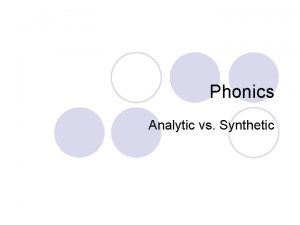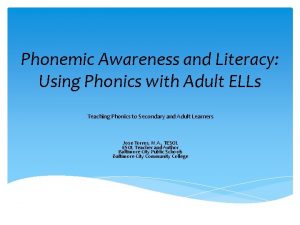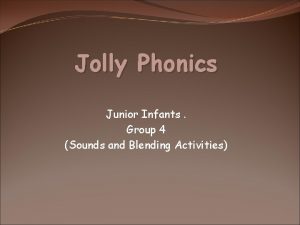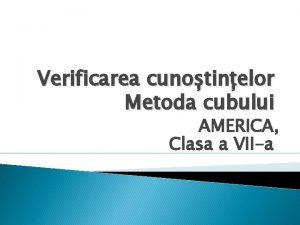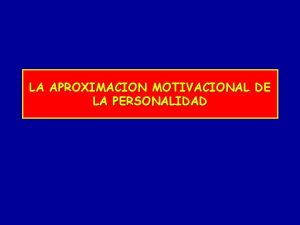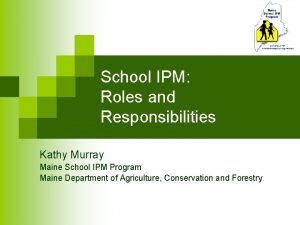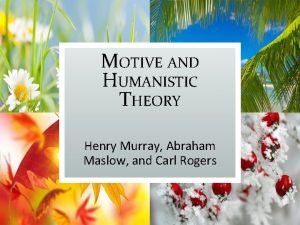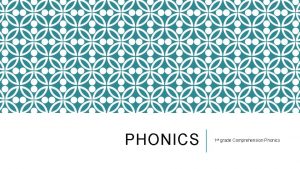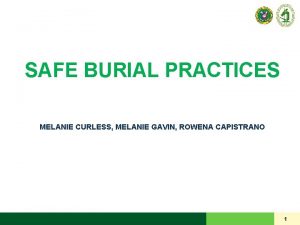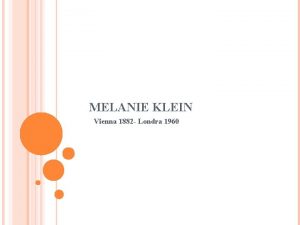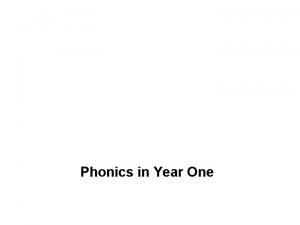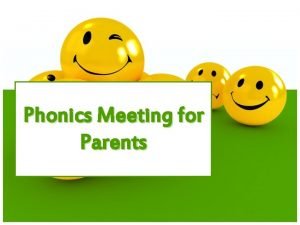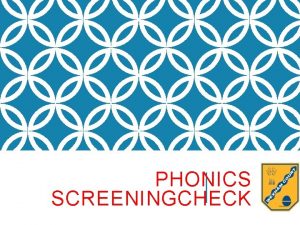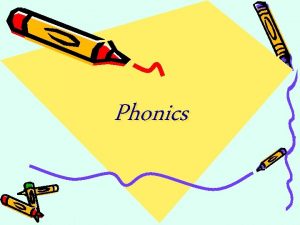TEACHING PHONICS Melanie Murray Phonics Phonics is the












- Slides: 12

TEACHING PHONICS Melanie Murray

Phonics • Phonics is the set of relationships between phonology (the sounds in speech) and orthography (the spelling system). • The emphasis is on spelling patterns, not individual letters. “Literacy in the Early Years” – Gail E. Tompkins

Phonics • The 44 phonemes in the English language are taught through phonics, not just the 26 letters of the alphabet. • There are more than 500 ways to represent the 44 phonemes usingle letters or combinations of letters. “Literacy in the Early Years” – Gail E. Tompkins

Teaching Phonics • The best way to teach phonics is through a combination of explicit instruction and authentic application activities. • Teachers assess children’s developing phonics knowledge using a combination of tests, observation, and reading and writing samples. • There are many programs out there to assist teachers in their instruction of phonics. “Literacy in the Early Years” – Gail E. Tompkins

• Jolly Phonics is a system which is used to teach children the letter sounds in a fun, multisensory way. • Each sound has an action, which helps children remember the letters that represent it. As a child becomes more confident, the actions are not necessary anymore. • According to Jolly Phonics, the five basic skills for reading and writing are: 1. Learning the letter sounds 2. Learning the letter formation 3. Blending 4. Identifying sounds in words 5. Spelling the tricky words. • Jolly Phonics is a popular system, and can be found in many classrooms. http: //www. jollylearning. co. uk/


Phonics Lessons K-2 & Word Study Lessons 3 – Gay Su Pinnell & Irene C. Fountas

Phonics Lessons 2 – Gay Su Pinnell & Irene C. Fountas • A rich array of grade-specific teaching tools • Includes: • Complete mini-lessons on each topic • Modifications for different ability levels • Games and activities to accompany the lessons • Assessment tools • Worksheets, word cards, and other materials • Possible links, for example: readalouds, guided reading / independent reading books, writing connections, and a connect at home section. • Suggestions for expanding the learning

Phonics Lessons 2 – Gay Su Pinnell & Irene C. Fountas

Phonics Lessons 2 – Gay Su Pinnell & Irene C. Fountas

Categories The lessons and materials in Fountas & Pinnell’s “Phonics Lessons 2” book are divided into six categories: • Letter/Sound Relationships • Spelling Patterns • High Frequency Words • Word Meaning • Word Structure • Word-Solving Actions

Have fun, and be creative!
